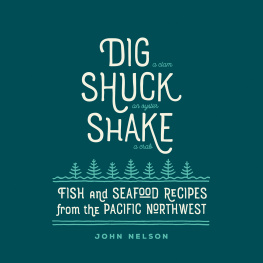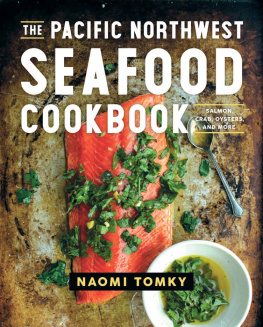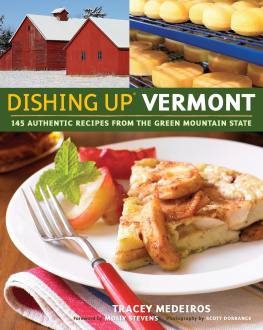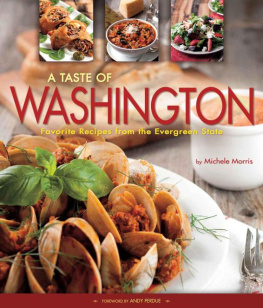The mission of Storey Publishing is to serve our customers by publishing practical information that encourages personal independence in harmony with the environment.
Edited by Margaret Sutherland and Lisa H. Hiley
Art direction and book design by Cynthia N. McFarland, based on a design by Tom Morgan of Blue Design
Cover and interior photography by Lara Ferroni, except for author photograph by Clare Barboza
Indexed by Nancy D. Wood
All rights reserved. No part of this book may be reproduced without written permission from the publisher, except by a reviewer who may quote brief passages or reproduce illustrations in a review with appropriate credits; nor may any part of this book be reproduced, stored in a retrieval system, or transmitted in any form or by any means electronic, mechanical, photocopying, recording, or other without written permission from the publisher.
The information in this book is true and complete to the best of our knowledge. All recommendations are made without guarantee on the part of the author or Storey Publishing. The author and publisher disclaim any liability in connection with the use of this information.
Storey books are available for special premium and promotional uses and for customized editions. For further information, please call 1-800-793-9396.
Reprint Permissions
, recipe from Mark and Michael Klebeck with Jess Thomson, Top Pot Hand-Forged Doughnuts: Secrets and Recipes for the Home Baker, Chronicle Books, 2011.
Storey Publishing
210 MASS MoCA Way
North Adams, MA 01247
www.storey.com
LIBRARY OF CONGRESS CATALOGING-IN-PUBLICATION DATA
Thomson, Jess.
Dishing Up Washington / Jess Thomson ; photography by
Lara Ferroni.
pages cm
Includes index.
ISBN 978-1-61212-028-7 (pbk.)
1. Cooking, AmericanPacific Northwest style.
2. CookingWashington (State) I. Title.
TX715.2.P32T556 2012
641.59797dc23
2012024857
TO WASHINGTON,
for giving me a place I so happily call home
ACKNOWLEDGMENTS
FIRST AND FOREMOST, a huge and fragrant bouquet of thanks goes to the chefs and farmers who donated their time and energy. Their hard work has made this states food scene vibrant, and this book would not have been possible without their generous contributions of information and recipes.
Applause and thanks also go to the entire team at Storey Publishing, who put this gorgeous Dishing Up series together and invited me to be a part of it.
This book would not be what it is without Lara Ferroni, the outstanding photographer Id wanted to work with for years. Throughout the process, she was a trusted resource for recipe testing and a fabulous travel companion. Lara, this book is as much yours as it is mine, and I thank you for your constant commitment and support. Someday, well do a book thats only photos of us with baby animals and youll be able to use all those outtakes.
Thanks also to my recipe testers: Sarah Collyer, always my go-to gal, as well as Libby Fernau, Carma Burnett, Lauren Schultz, Mary Russell, Lindsay Hill, Carole Mathieson, Marny Lichtenstein, Amy Howe, Allison Howe, Nancy Thomson, Rebekah Denn, Susan Brook, Tami Horner, Hannah Viano, Alida Moore, Tim Collyer, Marc Schermerhorn, and Sarah Wallingford Blohm. And to my tireless reader, Lauren Bedford, for always having time for me.
Laura Russell, you were the best intern a woman could have.
Finally, thanks to my Seattle friends and family, who have dealt with my crazy dinners, my piles of dishes, and my litany of testing complaints. Your friendship and feedback are a crucial part of this process.
And thanks to my husband, Jim, and to our son, Graham, for always being there at the table with me.
Contents
FOREWORD BY ETHAN STOWELL
of Anchovies & Olives, How to Cook a Wolf, Staple & Fancy, and Tavolata
IM A WASHINGTON BOY. I spent cool, dappled summers in Seattle, prowling the dense blackberry thickets that grow like, well, weeds in every Seattle backyard. When we were young, my father did the cooking, gathering us nightly for a big family feast. Even then, you could find incredible food just by walking out the door, even near the city. Lakes are ringed with wild watercress and fern fronds coiled like green snails. Gray beaches and tidal flats offer up oysters, mussels, and clams to those with strong arms and a willingness to dig, not to mention the enormous geoduck, a giant clam that looks much like a small elephant trunk hanging out of a shell. Insane to look at, but incredible to eat sweet and briny, the flesh nearly crisp.
The same mild, damp weather that gives the Emerald City its name coaxes morels and chanterelles out of the needle-strewn forest floor and urges those tangles of thorny, obnoxious blackberry canes that, one glorious day in August, all seem to burst simultaneously with heavy purple-black fruit as fragrant as it is sweet.
Now that I think about it, its a place where some of the best food seems to almost bite you back: tender spring nettles that sting, those armored blackberries, aerodynamic razor clams that send up a little see-you squirt in your face as they dive toward the center of the earth, two-and-a-half-pound Dungeness crabs that try to grab you as you haul them out of the crab pot.
That was all there 35 years ago, and still is (nothing will kill blackberries short of an apocalypse), but whats amazing to me is what wasnt. There werent farmers markets in every neighborhood, offering handmade goat cheese, and fresh eggs, and new potatoes in shades from blush to bright rose. There were no urban chickens or backyard goats. Community Supported Agriculture, or CSA, programs, where subscribers pay in advance for produce grown at a certain farm, had not yet caught on. Pike Place Market wasnt the showstopper it is today, a vibrant, working public market where restaurateurs handpick their produce and tourists flock to see salmon fly. (Remember, its where the very first ittybitty Starbucks opened its doors in 1971, if thats any indication of how things have grown.)
Back then, if you wanted to buy fresh fish, you went down to the docks. Now, places like Taylor Shellfish offer some of the worlds best oysters at trendy storefronts in the most urban pockets of Seattle. Now, instead of the odd forager dropping by a commercial kitchen to offer handpicked nettles or a bagful of buttery chanterelles, its not uncommon for chefs to be out on the farm, cultivating relationships that benefit both farmer and chef.
Were not as divided as we used to be: city or farm, chef or home cook. And we have come to appreciate anew the gift of food grown, raised, and crafted with care. Its why I love being a chef, and why Im proud to be a Washington boy.











